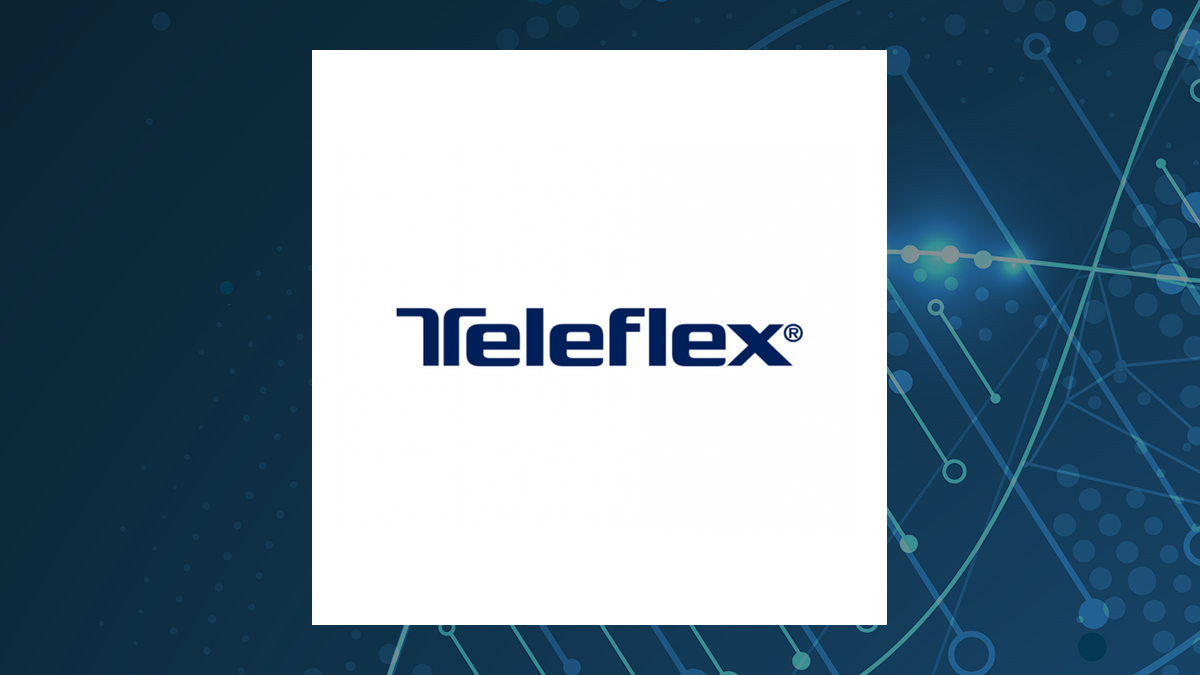Axonics (NASDAQ:AXNX – Get Free Report) and Teleflex (NYSE:TFX – Get Free Report) are both medical companies, but which is the better stock? We will contrast the two companies based on the strength of their institutional ownership, earnings, dividends, profitability, analyst recommendations, valuation and risk.
Profitability
This table compares Axonics and Teleflex’s net margins, return on equity and return on assets.
| Net Margins | Return on Equity | Return on Assets | |
| Axonics | -0.42% | -0.27% | -0.24% |
| Teleflex | 8.76% | 14.51% | 8.63% |
Earnings and Valuation
This table compares Axonics and Teleflex’s gross revenue, earnings per share and valuation.
| Gross Revenue | Price/Sales Ratio | Net Income | Earnings Per Share | Price/Earnings Ratio | |
| Axonics | $408.81 million | 8.62 | -$6.09 million | ($0.32) | -215.94 |
| Teleflex | $2.97 billion | 3.88 | $356.33 million | $6.23 | 39.32 |
Analyst Ratings
This is a summary of current recommendations for Axonics and Teleflex, as provided by MarketBeat.com.
| Sell Ratings | Hold Ratings | Buy Ratings | Strong Buy Ratings | Rating Score | |
| Axonics | 0 | 8 | 2 | 0 | 2.20 |
| Teleflex | 0 | 2 | 6 | 0 | 2.75 |
Axonics presently has a consensus target price of $69.57, suggesting a potential upside of 0.68%. Teleflex has a consensus target price of $265.57, suggesting a potential upside of 8.41%. Given Teleflex’s stronger consensus rating and higher possible upside, analysts plainly believe Teleflex is more favorable than Axonics.
Volatility & Risk
Axonics has a beta of 0.81, indicating that its share price is 19% less volatile than the S&P 500. Comparatively, Teleflex has a beta of 1.15, indicating that its share price is 15% more volatile than the S&P 500.
Institutional & Insider Ownership
99.5% of Axonics shares are owned by institutional investors. Comparatively, 95.6% of Teleflex shares are owned by institutional investors. 1.9% of Axonics shares are owned by company insiders. Comparatively, 1.4% of Teleflex shares are owned by company insiders. Strong institutional ownership is an indication that hedge funds, endowments and large money managers believe a stock will outperform the market over the long term.
Summary
Teleflex beats Axonics on 11 of the 14 factors compared between the two stocks.
About Axonics
 Axonics, Inc., a medical technology company, engages in the development and commercialization of novel products for the treatment of bladder and bowel dysfunction. Its sacral neuromodulation (SNM) systems are used to treat patients with overactive bladder (OAB), including urinary urge incontinence and urinary urgency frequency, as well as fecal incontinence (FI) and non-obstructive urinary retention (UR); and rechargeable (R20) and recharge-free (F15) implantable SNM systems that delivers mild electrical pulses to the targeted sacral nerve to restore normal communication to and from the brain to reduce the symptoms of OAB, UR, and FI. The company also offers Bulkamid, a urethral bulking agent to treat female stress urinary incontinence. It sells its products through a direct sales force and distributors in the United States, the United Kingdom, Germany, the Netherlands, Nordic countries, and internationally. The company was formerly known as Axonics Modulation Technologies, Inc. and changed its name to Axonics, Inc. in March 2021. Axonics, Inc. was incorporated in 2012 and is based in Irvine, California.
Axonics, Inc., a medical technology company, engages in the development and commercialization of novel products for the treatment of bladder and bowel dysfunction. Its sacral neuromodulation (SNM) systems are used to treat patients with overactive bladder (OAB), including urinary urge incontinence and urinary urgency frequency, as well as fecal incontinence (FI) and non-obstructive urinary retention (UR); and rechargeable (R20) and recharge-free (F15) implantable SNM systems that delivers mild electrical pulses to the targeted sacral nerve to restore normal communication to and from the brain to reduce the symptoms of OAB, UR, and FI. The company also offers Bulkamid, a urethral bulking agent to treat female stress urinary incontinence. It sells its products through a direct sales force and distributors in the United States, the United Kingdom, Germany, the Netherlands, Nordic countries, and internationally. The company was formerly known as Axonics Modulation Technologies, Inc. and changed its name to Axonics, Inc. in March 2021. Axonics, Inc. was incorporated in 2012 and is based in Irvine, California.
About Teleflex
 Teleflex Incorporated designs, develops, manufactures, and supplies single-use medical devices for common diagnostic and therapeutic procedures in critical care and surgical applications worldwide. The company provides vascular access products that comprise Arrow branded catheters, catheter navigation and tip positioning systems, and intraosseous access systems for the administration of intravenous therapies, the measurement of blood pressure, and the withdrawal of blood samples through a single puncture site. It also offers interventional products, which consists of various coronary catheters, structural heart support devices, and peripheral intervention and mechanical circulatory support platform that are used by interventional cardiologists and radiologists, and vascular surgeons; and Arrow branded pumps and catheters, Guideline, Turnpike, and Trapliner catheters, the Manta Vascular Closure, and Arrow Oncontrol devices. The company provides anesthesia products, such as airway and pain management products to support hospital, emergency medicine, and military channels; and surgical products, including metal and polymer ligation clips, and fascial closure surgical systems that are used in laparoscopic surgical procedures, percutaneous surgical systems, and other surgical instruments. It also offers interventional urology products comprising the UroLift System, an invasive technology for treating lower urinary tract symptoms due to benign prostatic hyperplasia; respiratory products, including oxygen and aerosol therapies, spirometry, and ventilation management products for use in various care settings; urology products, such as catheters, urine collectors, and catheterization accessories and products for operative endourology; and bladder management services. The company serves hospitals and healthcare providers, medical device manufacturers, and home care markets. Teleflex Incorporated was incorporated in 1943 and is headquartered in Wayne, Pennsylvania.
Teleflex Incorporated designs, develops, manufactures, and supplies single-use medical devices for common diagnostic and therapeutic procedures in critical care and surgical applications worldwide. The company provides vascular access products that comprise Arrow branded catheters, catheter navigation and tip positioning systems, and intraosseous access systems for the administration of intravenous therapies, the measurement of blood pressure, and the withdrawal of blood samples through a single puncture site. It also offers interventional products, which consists of various coronary catheters, structural heart support devices, and peripheral intervention and mechanical circulatory support platform that are used by interventional cardiologists and radiologists, and vascular surgeons; and Arrow branded pumps and catheters, Guideline, Turnpike, and Trapliner catheters, the Manta Vascular Closure, and Arrow Oncontrol devices. The company provides anesthesia products, such as airway and pain management products to support hospital, emergency medicine, and military channels; and surgical products, including metal and polymer ligation clips, and fascial closure surgical systems that are used in laparoscopic surgical procedures, percutaneous surgical systems, and other surgical instruments. It also offers interventional urology products comprising the UroLift System, an invasive technology for treating lower urinary tract symptoms due to benign prostatic hyperplasia; respiratory products, including oxygen and aerosol therapies, spirometry, and ventilation management products for use in various care settings; urology products, such as catheters, urine collectors, and catheterization accessories and products for operative endourology; and bladder management services. The company serves hospitals and healthcare providers, medical device manufacturers, and home care markets. Teleflex Incorporated was incorporated in 1943 and is headquartered in Wayne, Pennsylvania.
Receive News & Ratings for Axonics Daily - Enter your email address below to receive a concise daily summary of the latest news and analysts' ratings for Axonics and related companies with MarketBeat.com's FREE daily email newsletter.
